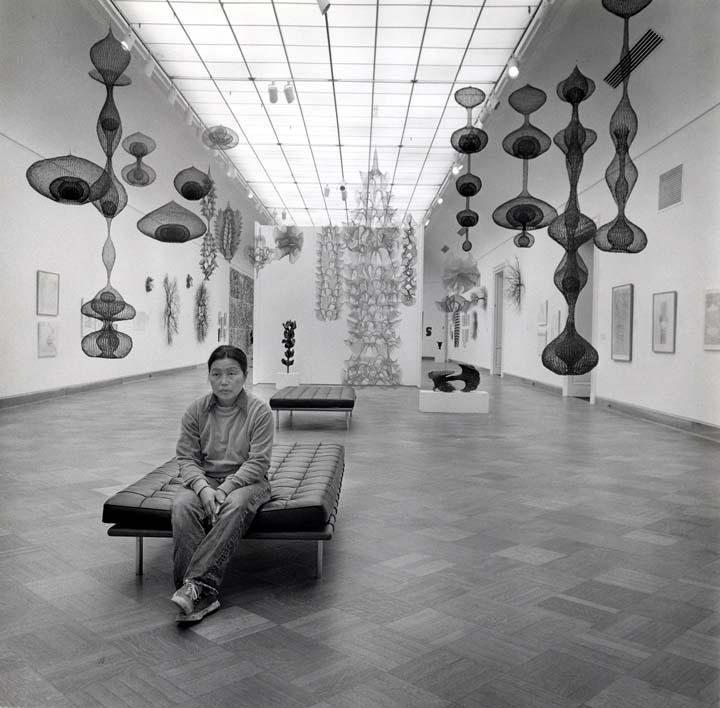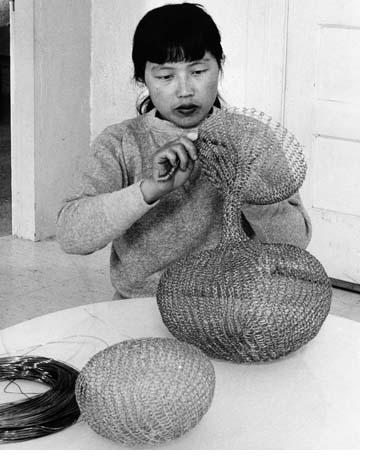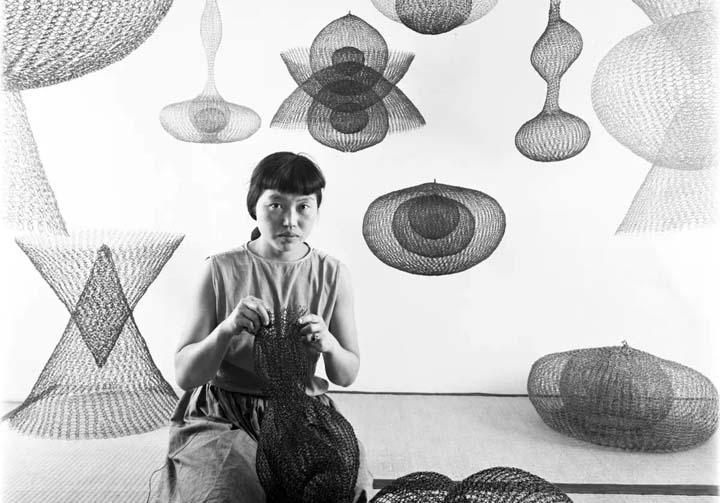Ruth Asawa | A Retrospective at MoMA
“I’m not so interested in the expression of something. I’m more interested in what the material can do. So that’s why I keep exploring,” said artist, educator, and civic leader Ruth Asawa, reflecting on a six-decade-long career. Featuring some 300 artworks, Ruth Asawa: A Retrospective, which opens Sunday, October 19 at the Museum of Modern Art, charts the artist’s lifelong explorations of materials and forms in a variety of mediums, including wire sculpture, bronze casts, drawings, paintings, prints, and public works. Above: Photo courtesy of SFMOMA
This first posthumous survey celebrates the ways in which Asawa continuously transformed materials and objects into subjects of contemplation, unsettling distinctions between abstraction and figuration, figure and ground, and negative and positive space. Below: Ruth Asawa at Ruth Asawa: A Retrospective View, San Francisco Museum of Art, 1973. Photograph by Laurence Cuneo. © 2025 Ruth Asawa Lanier, Inc., Courtesy David Zwirner.

Asawa made art every day, pursuing the inexhaustible possibilities offered by simple materials such as paper and wire since her days at Black Mountain College, where she studied in the late 1940s. Following a move to San Francisco in 1949, her practice grew exponentially as she produced a body of work ranging from endless variations of abstract looped-wire sculptures to calligraphic ink paintings.
Community was crucial to Asawa, who realized numerous public commissions—fountains, murals, and memorials—from the late 1960s onward, and stood at the forefront of arts education in the Bay Area and beyond. Taking a cue from her own work, Ruth Asawa: A Retrospective offers numerous points of entry into her art, encouraging close looking. It also reveals the model of integrated art practice cultivated by Asawa, for whom all acts held a creative potential and for whom there was no separation between living and making art.

Though Asawa had a separate, dedicated studio space (and adjacent outdoor garden), she had a stated preference for working on creative projects in the midst of the comings and goings of other people, starting with her family but also various other guests, including artists and designers working in many different media. Read more about Asawa’s formative years, which included being incarcerated as a Japanese-American during World War II, in this article in The Observer. Left: Ruth Asawa and Her Wire Sculpture 2, 1951. Photo: Imogen Cunningham © 2020 Imogen Cunningham Trust. Artwork © Estate of Ruth Asawa; Courtesy David Zwirner.
Continuing through February 7 at Museum of Modern Art, 11 West 53rd Street, New York, NY Info
Ruth Asawa: A Retrospective is an exhibition partnership between the San Francisco Museum of Modern Art (SFMOMA) and The Museum of Modern Art, New York (MoMA). The exhibition is organized by Cara Manes, Associate Curator, Department of Painting and Sculpture, MoMA, and Janet Bishop, Thomas Weisel Family Chief Curator, SFMOMA; with Dominika Tylcz, Curatorial Assistant, Department of Painting and Sculpture, MoMA; and Marin Sarvé-Tarr, Assistant Curator, and William Hernández Luege, former Curatorial Associate, Painting and Sculpture, SFMOMA.



